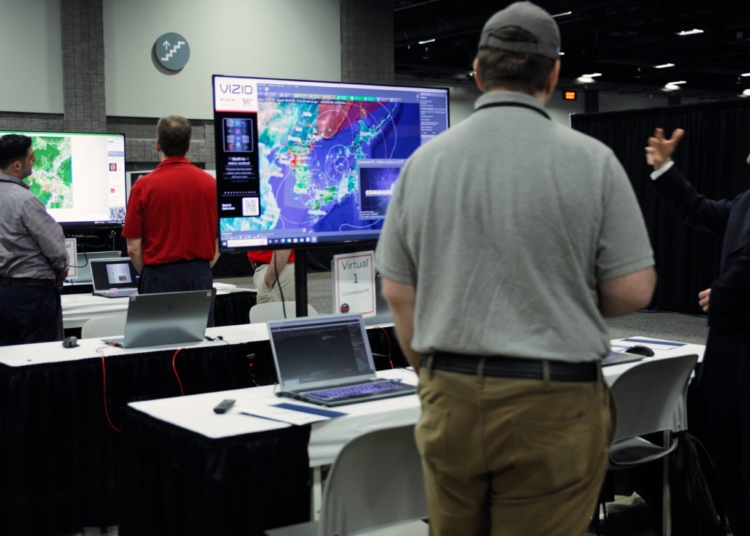This article examines the evolution of military simulation and wargaming, tracing its development from traditional board games to advanced technology. It highlights how board games like Chess and Go were used in ancient times to teach strategic thinking and simulate battle scenarios. It then explores the emergence of tabletop wargaming in the 19th century, which introduced complexity and realism through the use of miniature soldiers and terrain layouts. The article goes on to discuss the impact of computers, with a focus on flight simulators for training pilots and computer-based tactical simulations for strategic decision-making. It also explores how virtual reality and augmented reality technologies have further enhanced military simulation, providing immersive and interactive experiences. The article concludes by discussing the future of military simulation, with the integration of artificial intelligence and machine learning promising even more realistic and adaptive simulations.
The Evolution of Military Simulation and Wargaming: From Board Games to Cutting-Edge Technology
Introduction
Military simulation and wargaming have long been integral components of military training and strategic planning. Over the centuries, these simulations have evolved exponentially, from simple board games to sophisticated computer-based technology. This article delves into the history and progression of military simulation, exploring how it has adapted to embrace cutting-edge technologies.
Traditional Board Games
The origins of military simulation can be traced back to ancient times when board games like Chess and Go were used to teach and enhance strategic thinking. Military leaders would often use these games to simulate battle scenarios, test their tactics, and train their minds for the art of war. While these board games lacked visual representations and immediate feedback, they laid the foundation for future developments in military simulations.
Tabletop Wargaming
In the 19th century, tabletop wargaming emerged as a more elaborate form of military simulation. Games such as “Kriegsspiel” and “Little Wars” allowed players to maneuver miniature soldiers, artillery pieces, and terrain layouts on tabletops, using rules and dice rolls to determine outcomes. These games introduced terrain factors, troop morale, and supply management, adding complexity and realism to the simulations.
Computer-Based Simulations
The advent of computers in the mid-20th century revolutionized military simulation, enabling the development of more complex and interactive training tools. Early computer-based simulations focused on specific aspects of military operations, such as flight simulators for training pilots. However, as technology advanced, more comprehensive simulations were created.
Flight Simulators
Flight simulation has played a crucial role in training pilots and enhancing their skills. The introduction of graphics and real-time feedback in flight simulators provided a more immersive experience, allowing pilots to practice maneuvers, emergency procedures, and aerial combat without the risks associated with actual flight. These simulators incorporated realistic physics and replicated cockpit environments, preparing pilots for various scenarios they might encounter in the field.
Tactical Simulations
Computer-based tactical simulations emerged as a way to train military leaders in strategic decision-making. Simulations like “Harpoon” and “Steel Panthers” allowed commanders to simulate battles on virtual maps, considering factors such as troop positioning, terrain, and logistical concerns. These simulations provided commanders with a platform to test different strategies, evaluate potential outcomes, and refine their decision-making skills.
Virtual Reality and Augmented Reality
The advent of virtual reality (VR) and augmented reality (AR) technologies further revolutionized military simulation by providing immersive and interactive experiences. VR headsets and AR displays allow soldiers to engage in realistic combat scenarios, simulate various weapon systems, and practice critical decision-making in life-like environments. These technologies enable soldiers to enhance their combat skills, situational awareness, and teamwork, minimizing risks during actual operations.
The Future: Artificial Intelligence and Machine Learning
As technology continues to advance, the integration of artificial intelligence (AI) and machine learning (ML) promises to take military simulation to new heights. AI-driven opponents can provide more realistic and adaptive challenges, simulating enemy forces with advanced tactics and decision-making abilities. ML algorithms can analyze vast amounts of historical data to generate more accurate simulations and help predict outcomes in future conflicts.
Conclusion
From traditional board games to cutting-edge technology, the evolution of military simulation and wargaming has come a long way. Starting with simple chess-like games, military simulations have evolved to encompass computer-based simulations, flight simulators, and now virtual reality and augmented reality environments. Looking forward, the integration of artificial intelligence and machine learning will continue to enhance military simulations, preparing soldiers and commanders for the complex challenges of modern warfare.













